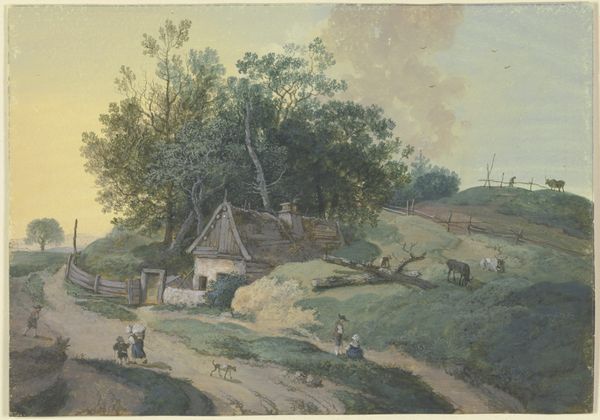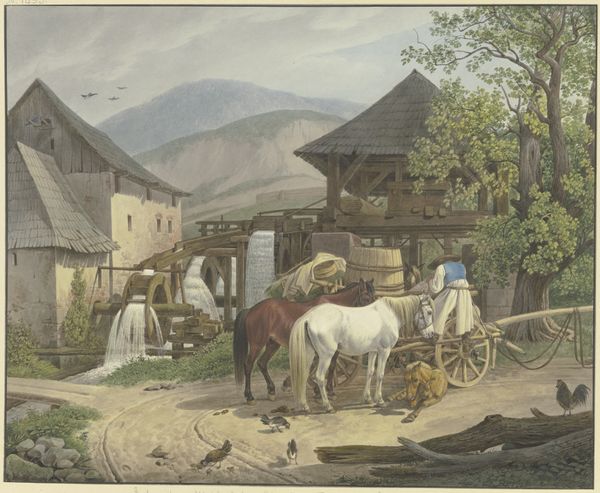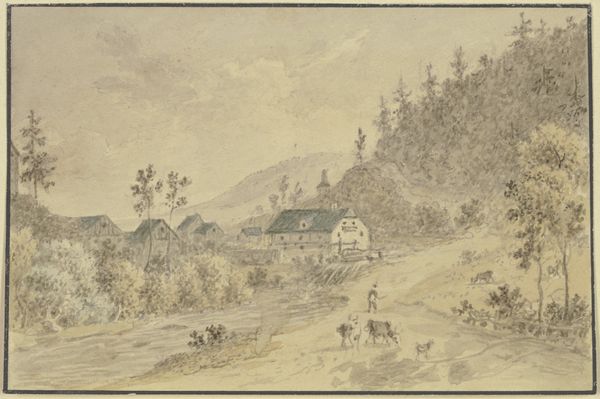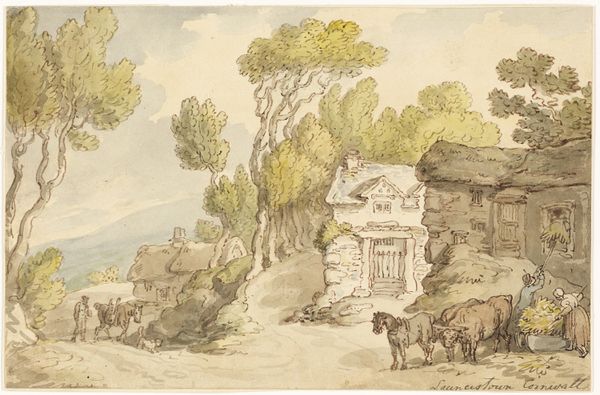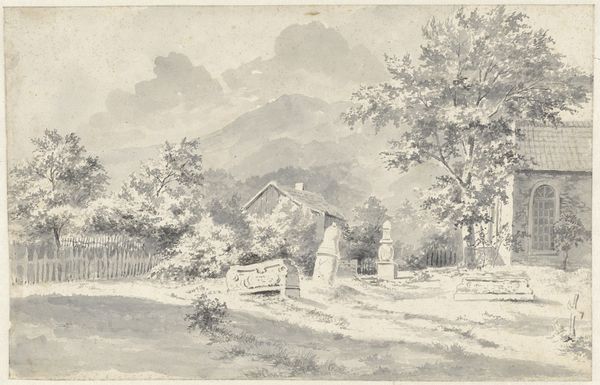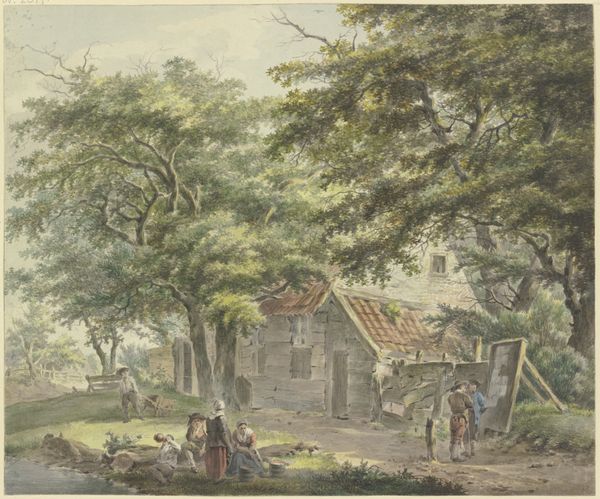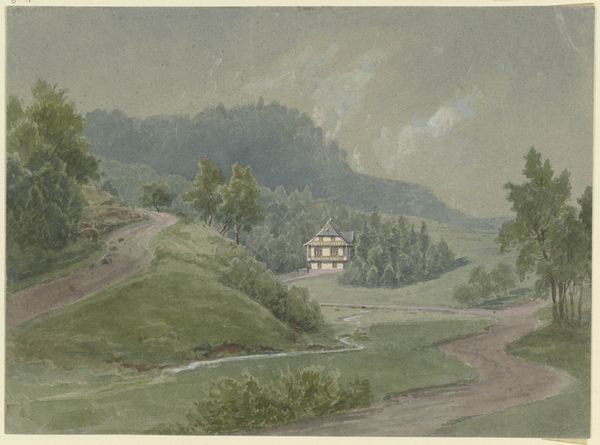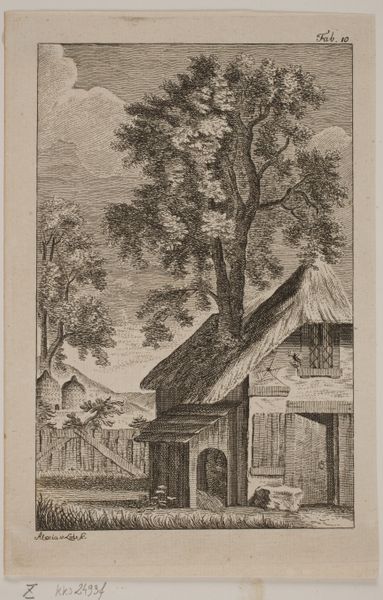
Copyright: Public Domain
Editor: We're looking at Jakob Maurer's "Return of the Herd to the Stable in the Evening," created in 1853 using watercolor. The subdued tones create a feeling of peaceful closure, almost melancholic. The way the path leads your eye into the distance is also quite effective. What strikes you most about its composition? Curator: Note how the composition is primarily structured through contrasting light and dark fields, an interplay rather typical of the Romantic movement's engagement with the sublime. See the progression from the dim, clouded sky to the illuminated path. It invites semiotic reading of a journey, but on closer view we find that that the emphasis is not on grand spectacle or transcendental experience but on everyday pastoral life. Do you observe how the figures are downplayed? Editor: Yes, the human figure is so small, almost a footnote. The animals seem to command greater attention. Curator: Precisely! The formal arrangement elevates the quotidian. Maurer focuses less on detail and more on tonal relationships; consider the almost uniform texture, with gentle color gradations that articulate depth, particularly around the barn, yet its precise shape melts into its own shadows. Editor: That’s a great point about the shapes dissolving. It makes me rethink my initial response. The light isn't just about peaceful closure; there’s a definite contrast at play. It is like nature almost engulfing civilization. Curator: Exactly. One has to look carefully at how it represents space and its elements to decode it, even within something as simple as plein-air watercolor drawing like this one. The beauty in this artwork truly reveals itself with patient looking. Editor: I see that now; I missed so many subtleties on first viewing. Thank you.
Comments
No comments
Be the first to comment and join the conversation on the ultimate creative platform.
